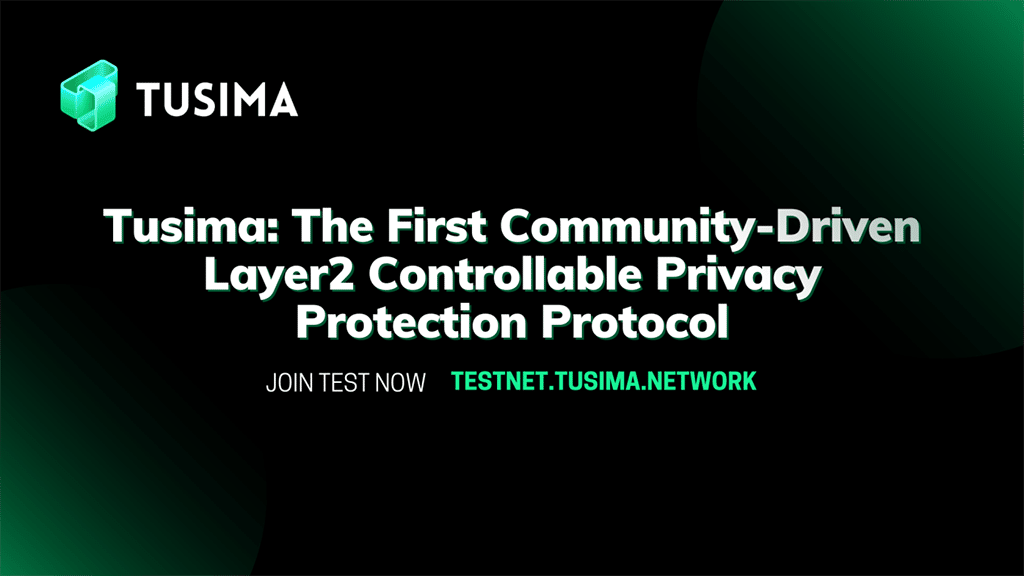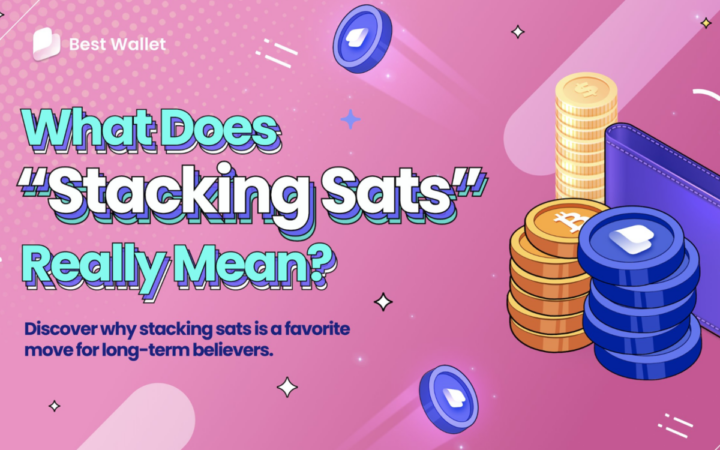
Tusima: The First Community-driven Layer2 Controllable Privacy Protection Protocol

There are two types of privacy in financial transactions: anonymity and confidentiality. When a non-profit organization receives an anonymous donation, they have no idea about the information of the donor (anonymity), but they do know the amount of the donation received. And when you withdraw money at bank, the amount you withdraw is confidential – the person behind you doesn’t know the exact amount you’ve taken, but they know it’s you who’s withdrawing.
An important reason for the difficulty of large-scale commercial use of blockchain finance is that, as a public ledger, although it establishes trust among various participants, it also brings a new problem, how to protect user privacy data? Since all data on the chain is open and transparent, once it is maliciously mined and used, it will bring a serious threat to user privacy.
The existing blockchain privacy protection solutions can be divided into three categories: solutions based on crypto mixing transactions, Layer1 native chain architecture, and cryptography.
For the privacy protection solutions of crypto mixing transactions, privacy crypto such as Dash, block the connection between the sender and the receiver by mixing the transaction information of the participants; it can only achieves asset untraceability and does not hide key information such as the sender, receiver and amount of the transaction.
The solutions of Layer1 native chain architecture include Nym, Secret Network, Iron Fish, Manta Network, etc. Starting from blockchain architecture, the solution modifies the architecture so that the nodes in the blockchain maintain different ledger information. Although it can effectively avoid the leakage of user privacy, it is not compatible with Ethereum, the largest existing blockchain ecosystem, and it is difficult to expand application scenarios and build an ecosystem.
For the solutions of cryptography, it uses cryptography technology to protect the privacy of participants’ transaction, among which zero-knowledge proof has the highest degree of protection for transaction information. The more prominent solutions are Zcash, Aztec. However, although Aztec and Zcash can achieve complete privacy and non-interaction, they are not suitable for various complex scenarios due to the UTXO model.
In view of the shortcomings of existing privacy protection, we propose a concise, efficient, non-interactive and auditable privacy protection solution based on account model. It has the following characteristics:
- Privacy protection: It can realize the privacy of the address in the transfer transaction, and also the privacy of the amount.
- Programmability: The protocol encapsulates API interfaces such as private transfer, private transaction, and cross-chain, which easily brings developers a privacy engine in the computing and storage layers, and supports the realization of various complex applications through smart contracts.
- Scalability: In order to apply to a large number of financial transaction scenarios, the privacy protocol should meet the high TPS, low cost, and high stability network system.
- Multi-chain interoperability: The multi-chain interoperability protocol is compatible with mainstream public chains such as ETH, Matic, AVAX, and BSC. It can realize bridging assets, cross-chain messaging, and also cross-chain state sharing, lending, swap, governance and more scenarios.
What Is Tusima?
Tusima is a controllable privacy network based on account model. It integrates zero-knowledge proof, recursive proof, homomorphic encryption and other technologies to achieve controllable on-chain data privacy function, protect the privacy of Web3 users’ sensitive data and build a scalable financial network with high TPS. It aims to build controllable privacy finance infrastructure in Web3.0 era.
Specifically, Tusima achieves anonymity of user identity and confidentiality of transaction data. Private asset exchange can be realized between any blockchain network, and controllable access to user private data is supported. Its core idea is to use Layer 2 for state management and Layer 1 security level for asset transfer and exchange in a completely decentralized way.
Based on the features of ZK-Rollup. All funds are held by smart contracts on the main chain, while off-chain calculations and storage are performed, and the validity of the calculations is ensured by zero-knowledge proofs. ZK-Rollup and homomorphic encryption provide transaction privacy while improving performance and significantly reducing costs. Tusima integrates the transaction state into Layer2 and updates the same final state on each Layer1. Status updates are maintained by ZK-Rollup to achieve the same level of decentralization and security as Layer1. In addition, Tusima is based on an account model, providing flexible extensibility and programmability for the community and developers.
What Core Problems Are Solved?
- Privacy of on-chain identity and transaction data
- Privacy function with controllable access
- Efficient and low-cost rollup transactions with the security of the main chain of Ethereum
- The auditability scheme based on ZK ensures the legitimacy of the source of Tusima’s second-layer network assets
What Are the Technical Advantages?
- The privacy solution based on the account model is different from the technical implementation based on UTXO in the market. It has higher scalability and supports smart contract programming. Tusima uses the asymmetric homomorphic encryption algorithm Elgamal to do the encryption between ciphertexts. Due to the asymmetry of the algorithm, users can decrypt their own transaction data, but cannot view other people’s data or be viewed by unauthorized users.
- More efficient privacy address shuffling technology (Shuffle)
- Full network, full link privacy (user local encryption, second-layer network nodes do not know transaction information, and first-layer network does not know transaction information)
- Use Halo2 recursive proof for parallel computing to achieve faster zk proof speed
- Use Plonk algorithm to make Proof smaller to achieve lower transaction costs
- ZK-based auditability scheme to ensure the source of Tusima’s second-layer network assets legality
What Are the Application Scenarios?
Commercial level
- Application scenarios of high-frequency and high-interaction business activities
As the most widely used and most credible on-chain infrastructure, Ethereum cannot be used in high-frequency and high-interaction business scenarios due to its high use cost and low transaction efficiency, and can only be used as the final data settlement layer, while Tusima is based on ZK-Rollup technology, has the fastest transaction solution in the current blockchain, the transaction cost is not 1/100 of Ethereum, and has the main chain level security on Ethereum.
- Commercial and financial privacy scenarios
Blockchain is an open ledger technology. The open, transparent and verifiable transaction data ensures the correctness and sustainability of the ledger. However, the openness and transparency of data is not favorable by everyone. Transaction data, especially commercial financial data naturally requires privacy protection. Regardless of funds, securities, banks or other financial institutions, the use of blockchain to solve data settlement problems must be inseparable from data privacy issues. The use of blockchain to solve the problem of data settlement must be inseparable from the problem of data privacy. After Tusima supports business scenarios with high efficiency and low cost, the core problem of privacy protection of transaction data on the chain is solved. In the Tusima financial network, only users know their transaction information, not even the nodes that verify the transaction, and no one else can know the specific information of the transaction unless authorized by the user. For financial institutions, Tusima allows users to encrypt and decrypt transaction information.
User level
Tusima not only provides anonymity to the transaction address and confidentiality to the transaction amount, but also solves one of the most vexing problems currently: the MEV problem (or Front-Running problem). Tusima provides full protection against MEV, unlike other Layer2 which relies on low latency to partially prevent MEV.
Firstly, Tusima is implemented based on Layer2, its low retardance is naturally resistant to MEVs. Secondly, the amount of each transaction is encrypted according to the public key, and only the user knows the details of the transaction. Finally, Tusima has a fair sort service. Tusima’s mempool is a first-in, first-out (FIFO) queue, which is related to the generation of privacy certificates. Each transaction must be guaranteed to be executed in order. All transactions in all Tusima are fully protected against MEV operations.
How to Participate in Tusima Testnet?
Tusima Network, a controlled privacy protocol based on ZK-Rollup, has officially launched the public TestNet campaign and distribution of test contribution certificate SBT on September 30.
The public TestNet will run until Oct 31, 2022. Users can participate in testing during the TestNet phase. The functions mainly include recharge of Layer 1, private transfer of Layer 2, withdrawal and viewing of private transaction records. We recommend that users read the Tusima test manual for more information and instructions about the Tusima TestNet.
During the public TestNet, you can submit feedback in the Discord channel, giving your experiences and suggestions about the product. And follow us on Twitter and Medium so you won’t miss the upcoming events.
Welcome to Tusima Community: Website, Twitter, Medium, Discord.
Disclaimer: This publication is sponsored. Coinspeaker does not endorse or assume responsibility for the content, accuracy, quality, advertising, products, or other materials on this web page. Readers are advised to conduct their own research before engaging with any company mentioned. Please note that the featured information is not intended as, and shall not be understood or construed as legal, tax, investment, financial, or other advice. Nothing contained on this web page constitutes a solicitation, recommendation, endorsement, or offer by Coinspeaker or any third party service provider to buy or sell any cryptoassets or other financial instruments. Crypto assets are a high-risk investment. You should consider whether you understand the possibility of losing money due to leverage. None of the material should be considered as investment advice. Coinspeaker shall not be held liable, directly or indirectly, for any damages or losses arising from the use or reliance on any content, goods, or services featured on this web page.




